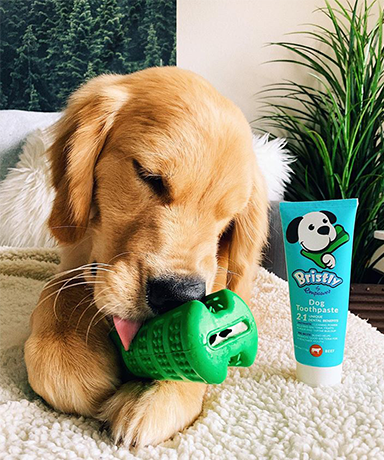Your Cart is Empty

Time to make your inbox pawsome
Sign up today and get 10% OFF your first purchase!


Whether you've rescued a pet with a troubled past, or your new pup suffers from separation anxiety, dealing with these emotions can be difficult for everyone.
Like humans, when dogs become anxious, the world can feel as if it's caving in, affecting them in many ways. Anxiety can occur with any dog breed, and when left unchecked, a dog can develop an anxiety disorder, leading to behavioral and other issues.
Finding out what causes your dog’s anxiety can be the most difficult task of all. The Merck Veterinary Manual states that a variety of causes can trigger anxiety. The most common being brought on by:
Luckily, some signs will alert you to your dog's suffering. Though, for some pets, their stress may manifest in ways that you may confuse with something else. For example, if they've stopped eating, you may assume they're just sick of a dog food brand when in reality, it could be anxiety.
Common signs of anxiety in dogs include:
As you can see, many of these common anxiety signs could be mistaken for another issue! Be conscious of how your dog is reacting, and if any new or recent stressors could be causing this unwanted or new behavior.
To help your pup better manage stress, we suggest these five tips that can help calm an anxious dog and create a special bond between the two of you!
A relaxing massage is enough to calm even the most anxious dog, and, similarly, you can use massage techniques and physical contact to help ease the tension caused by your dog’s anxiety.
To start, work the neck area and then gently move downward with long strokes. Watch some dog massage videos and within a few weeks, you’ll be able to identify and work your dog’s most troublesome areas.
The power of music is mind-boggling. Music alone can calm and relax us and our pets while at home, on the go, or alone. Music is particularly useful when you have to leave your dog home alone or want to alleviate loud and scary street noise - fireworks, for example.
If you’re wondering what music genre your dog will like, research shows that most dogs prefer classical music.
If you can sense your furry friend is acting out and anxious, it might help to take them out of the situation and give them some alone time in a quiet and safe space. 30-minutes on their own, under calm conditions with dimmed lights and soft music, can do wonders.
Calming coats and anxiety vests apply constant pressure to your dog’s torso. Similar to a baby in a blanket, the mild pressure surrounding your dog’s torso causes a calming effect. Think of it as a personal cuddle machine! A calming coat or anxiety vest is useful for dogs suffering with anxiety during travel, separation, or noisy environments.
If you’ve identified the possible scenarios that onset your dog’s anxiety, then it’s possible for you to remove these stressors from their day-to-day life to see if it helps lessen their anxiety. This could be anything from visiting the dog park when it’s empty or playing games inside the comfort of your home.
Once the cause has been found, you can go about treating or managing it.
Bristly toys and treats can help your pup deal with anxiety. The Bristly Dog Lick Mat can naturally reduce anxiety and promote calm behavior during stressful times such as thunderstorms, grooming, and nail trimming.
